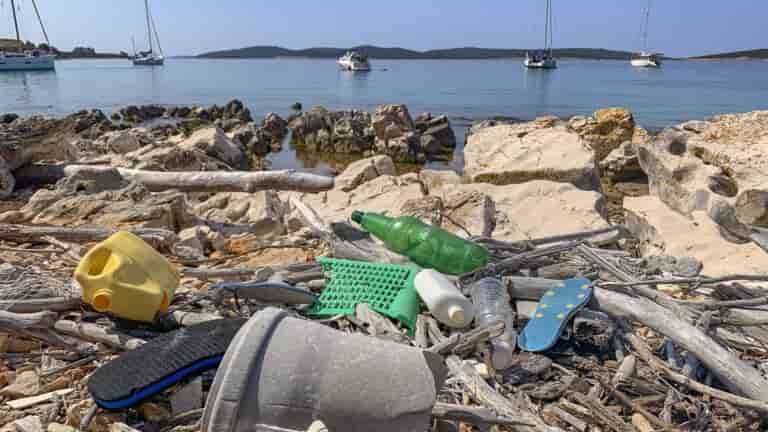Bottle washing – PLA technology 01-06-2023 - Arhive
Bottle washing – PLA technology Layered film recycling
Crude Oil Prices Trend
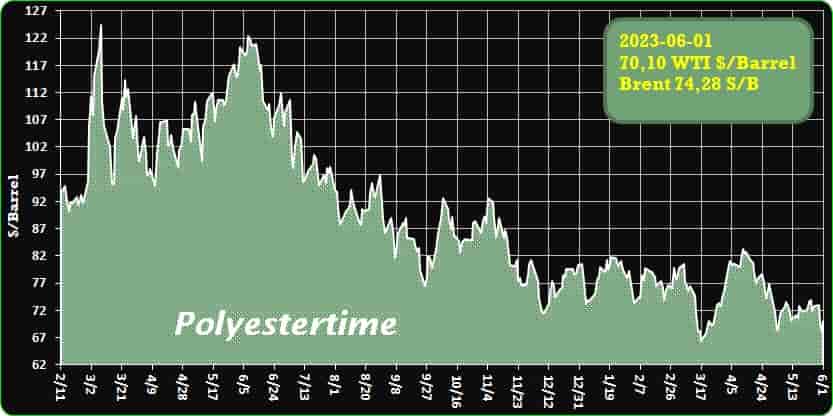
Crude Oil Prices Trend by Polyestertime
-Sorema recently announced the successful launch of a PET bottle washing and recycling plant in Yangon, Myanmar (Burma)
The plant, located at Commercial Plastics, has met all qualitative and quantitative parameters, marking a significant achievement.
Andrea Villa, Senior Technical and Sales Engineer at Sorema, described the newly operational plant as a result of conducting a wash and recycle trial at their Recycling Research Center (RRC) in Alzate Brianza. Through this trial, using dirty bottles collected by Commercial Plastics, Sorema developed the necessary parameters to design a plant capable of producing 2,200 kg/h of high-quality flakes. These flakes can then be reused in the production of soft drink bottles. Multilayer Film Recycling
Villa emphasized that the material test conducted at Sorema’s RRC laboratory confirmed that the majority of the local market collection in Myanmar consists of small-format bottles ranging from 330 cc (mL) to 1000 cc (mL). These bottles are heavily contaminated with PVC labels, sand, and abrasive materials. Based on this analysis, Sorema, leveraging its robust and efficient design, developed and manufactured a bottle-to-bottle (BtoB) line customized for PET bottle recyclers in Southeast Asia (SEA).
The plant incorporates several machines, carefully constructed with high-quality components. It begins with a pre-washing module to remove labels and ensure optimal cleaning of the material surface. This technology improves the sorting process and minimizes wear on the entire production line, extending the delabeler’s maintenance schedule to several months. Bottle washing – PLA technology Layered film recycling
The plant also achieves efficient removal of PVC labels through a combination of a delabeler, wet elutriator, and material detectors. This innovative technology meets the stringent standards set by major brand owners for their recycled PET (rPET) products. Furthermore, considering the SEA market’s transition from PVC to PP labels, Sorema’s technology proves vital in efficiently removing label glue. The company also took into account the potential wear caused by elevated sand levels in the input bales resulting from local collection practices. Multilayer Film Recycling
Source: Sorema
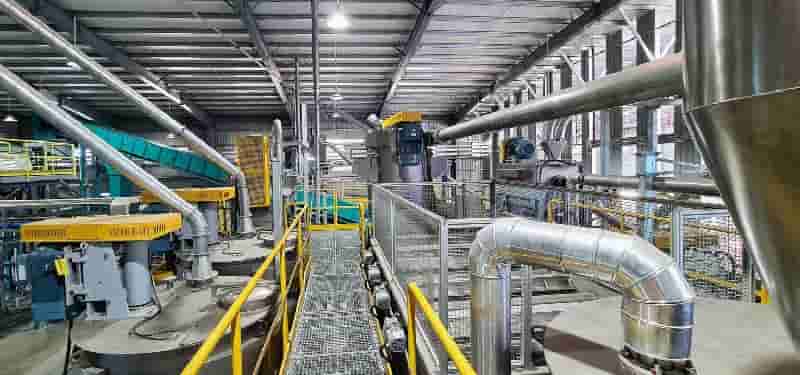
-Deink Brasil Unveils Groundbreaking Solution for Multilayer Film Recycling
Deink Brasil, a pioneering company in the field of sustainable solutions, has developed an innovative technology that promises to revolutionize the recycling of plastic multilayer films and multi-material plastic waste. Known as Deink 4D, this groundbreaking process is set to solve the conundrum of recycling previously unrecyclable post-consumer waste.
Multilayer films, commonly used in laminated packaging, pose significant challenges for recycling due to their composition of various plastic resins, adhesives, foils, and coated cardboard. However, Deink Brasil’s delamination technology offers a viable and technically feasible solution by effectively separating these layers and eliminating ink, metal, and varnish residues. The resulting resin possesses properties and performance comparable to virgin resin, making it an ideal material for reuse. Multilayer Film Recycling
Marcelo Mason, the head of Sustainability & ESG at Deink Brasil, described the process as a chemical-mechanical hybrid recycling method that holds immense potential for global implementation. Notably, the technology does not employ solvents, ensuring an environmentally friendly approach. Bottle washing – PLA technology Layered film recycling
Deink Brasil has already incorporated the innovative de-inking technology developed by Spanish company Cadel, enabling the complete removal of inks from printed plastic waste. However, the company’s drive for innovation pushed them to pursue additional solutions. Mastering the delamination process is considered a significant milestone in the plastic recycling industry, according to Mason.
Founded in 2017 by Rogério Mani, Deink Brasil introduced the Cadel de-inking technology to Brazil, holding the exclusive license for the process. In 2022, the Brazilian packaging specialist Valgroup acquired a stake in the company, further strengthening its position in the industry.
The company is preparing to launch its first Deink 4D multi-layer plastics recycling line at a state-of-the-art facility spanning 30,000 m2 in Itupeva (São Paulo). Scheduled for July, this initial production line, focused on bioriented polypropylene (BOPP) films, marks the beginning of a transformative journey. Depending on demand, Deink Brasil plans to establish a second line shortly thereafter.
The Itupeva plant, with an installed capacity of 25,000 tons per year, represents an initial investment of R$ 85 million. Looking ahead to 2030, the company envisions ten additional lines across various regions of Brazil. Multilayer Film Recycling
Marcelo Mason emphasized the vast potential of the Deink 4D technology. With Brazil ranking as the fourth largest producer of plastic waste globally, the country disposes of over 2.4 million tons of plastic improperly, often in open-air dumps. Furthermore, approximately 7.7 million tons of waste find their way into landfills each year. The advent of Deink 4D offers a promising solution to this pressing environmental issue, paving the way for a more sustainable future. Bottle washing – PLA technology Layered film recycling
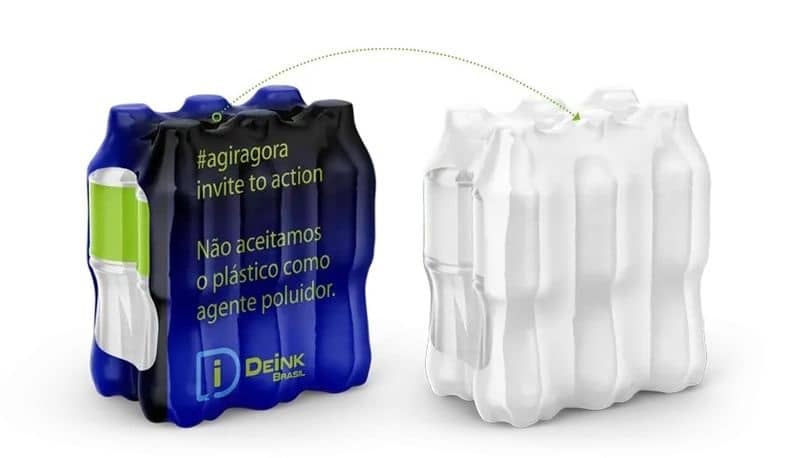
Credit : Deink Brasil
-Sulzer signs agreement with Jindan New Biomaterials in China for production of biobased plastic
Jindan will utilize Sulzer’s licensed PLA technology at its new manufacturing plant to produce up to 75’000 tonnes of PLA per year, mainly to be used for food packaging, molded goods and fibers production.
Sulzer has recently signed an agreement with major lactic acid (LA) producer, Jindan New Biomaterials (Jindan), to enable the production of polylactic acid (PLA), a biobased plastic. Jindan will utilize Sulzer’s licensed PLA technology at its new manufacturing plant in Henan Province to produce up to 75’000 tonnes of PLA per year, mainly to be used for food packaging, molded goods and fibers production. Sulzer will also provide extensive service support to ensure a seamless start.
Enabling the transition to sustainable, circular practices
Jindan’s new bioplastic facility will produce PLA in a variety of grades to support the expanded use of bioplastics in several sectors in China, including the textile and package manufacturing industries. To enable the company’s transition towards more sustainable, circular practices, Sulzer Chemtech will design and supply its key proprietary PLA technology, while further providing extensive engineering and technical support and field services as the manufacturer commences operations. Multilayer Film Recycling
Sulzer’s Executive Chairwoman Suzanne Thoma said: “Our leading technologies are currently used at the vast majority of existing PLA facilities worldwide and support the increased adoption of circular manufacturing practices and sustainable materials. We are pleased to collaborate with Jindan New Biomaterials to meet ever-increasing market demand for bioplastics.” Bottle washing – PLA technology Layered film recycling
Mr. Shi Congliang, President of Jindan New Biomaterial, added: “By investing in Sulzer’s PLA solutions, we are taking key, strategic steps to advance our competitiveness in the booming biopolymer industry and drive the use of greener plastics. Thanks to its comprehensive expertise in the PLA value chain and all the stages involved, Sulzer Chemtech is an extremely valuable partner. We look forward to installing the equipment and starting-up our enhanced operations.”
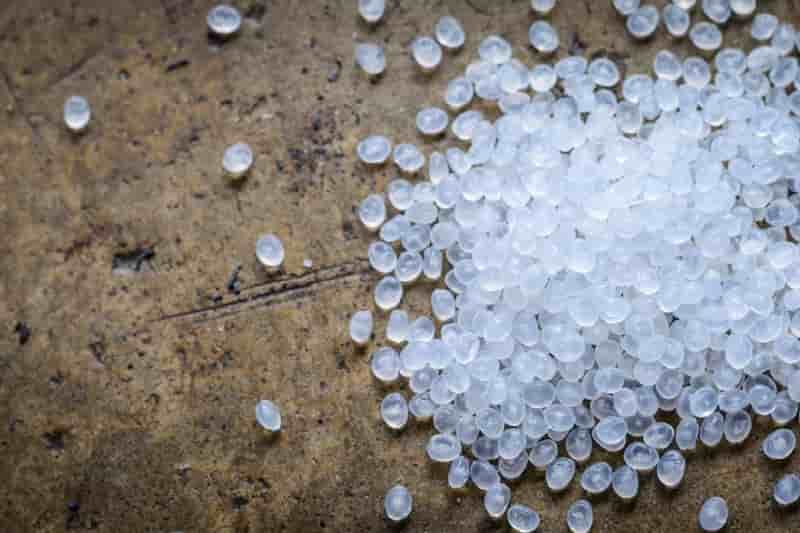
-“Thermoforming: a path to circularity”
Petcore Europe Thermoforms WG was launched in June 2015, followed by online workshops on Recycling PET Thermoforms in March 2015 and in December 2021.
Don’t miss our Thermoforms Conference 2023 that will be held on the 14 & 15 June in Italy, Bologna at Hotel Savoia.
Thermoforms WG comprises around 50 companies and organisations including key players from industry and waste management. The objective of this event is to promote thermoforms collection & recycling and specifically tray to tray recycling. We will also showcase Petcore Europe Thermoforms WG’s initiatives: Tray Circularity Evaluation Platform (TCEP) and Functional Barrier (FB) task force. Please be advised that the number of attendees is strictly limited, thus we strongly encourage to make a reservation at your earliest convenience. Bottle washing – PLA technology Layered film recycling
Agenda and Confirmed Speakers
On the first day of the event, we will have presentations from all the major experts in the field of thermoforms:
09:30 – 09:40 Introduction by Antonello Ciotti (PETCORE Europe) “Welcome – What are the waves in front of us?”
09:40 – 10:00 Raphael Jaumotte & Jose Antonio Alarcon (PETCORE Europe) “Reaching Circularity for thermoforms, turning expectations into facts”
10:00 – 10:30 Regulatory updates
10:30 – 12:45 EPR vision & Panel Discussion. Speakers & Panelists:
Jose Maldonado Ibanez (Eco-embes)
Corepla (speaker TBC)
Vincent Colard (Citeo)
12:45 – 13:30 Lunch Break Multilayer Film Recycling
13:30 – 14:30 Recycler vision & Panel Discussion. Speakers & Panelists:
François Lagrue (Wellman)
AMP (speaker TBC)
Michal Figúr (GreenTech)
14:30 – 15:30 Converter Vision & Panel Discussion. Speakers & Panelists:
Ana Fernandez (KP) TBC
Faerch (speaker TBC)
PACCOR (speaker TBC)
15:30 – 16:15 Brand Owner & retailers’ vision & Panel Discussion. Speakers & Panelists:
CoOp (speaker TBC)
Schwartz (speaker TBC)
16:15 – 16:45 Functional barrier by Jose Antonio Alarcon (PETCORE Europe) Presentation of the exercise and what the exercise has taught to us?
16:45 –17:15 TCEP by Chair of the TCEP Samuel Pardo (KP) “How to improve recyclability via the platform of recyclability at PETCORE?” Bottle washing – PLA technology Layered film recycling
17:15 – 17:30 Closing Panel Discussion
17:30 – 17:45 Wrapping-up by Antonello Ciotti (PETCORE Europe)
While, on the second day Petcore Europe will organise a Plant visit at Hera sorting plant, in Ferrara region, showcasing Corepla’s efforts to collect & sort thermoforms in Italy (strictly for Petcore Europe members only).
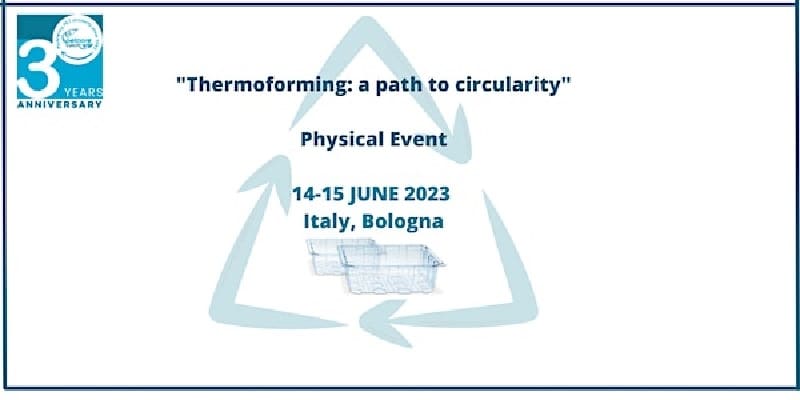
-Dilo Group: Inventing the future today in nonwoven textile technology
Dilo Group has never ceased to amaze with its innovative nonwoven textile machinery range. The Germany-based group has been setting the benchmarks in nonwoven textile machinery manufacturing for a long time now. Its machinery is playing a key role in the textile industries of over 50 countries globally. In an exclusive interview, CEO Johann-Philipp Dilo spoke at length about the company’s early days, its history, products and solutions, USPs, participation in INDEX and ITMA 2023 and future plans, among others
Founded in 1902, Dilo is undoubtedly the oldest and continues to retain its global market leadership as a nonwoven machinery manufacturer. Can you look back on this glorious history and the key milestones in the history of the organisation?
Dilo Machine Building in Eberbach, Germany, was founded in 1902 by my grandfather Oskar Dilo. He started to supply to local spinning mills, who manufactured upholstery and mattress pads, machines for fibre preparation, carding and interlacing to process natural fibre and animal hair. After World War II my father Richard Dilo, his brother Oskar and sister Helene continued this business while the machine design was steadily improved. In the second half of the 1950s, the first needle loom was designed which replaced later the interlacing machine for mattress pads. Bottle washing – PLA technology Layered film recycling
Through an array of innovations and inventions in the 1960s, 1970s and 1980s, Dilo started its reputation as the specialist for needle looms. Among those were specialty needle looms for circular needling ‘Rontex’ to produce filter material in 1967, in 1968-69 the ‘Di-Loop’ structuring and patterning needle loom for floor coverings, in 1975 the ‘Di-Loft’ machine for lightweight car interior material, in 1979 the ‘Beltex’ process for paper machine felts, in 1983 the ‘Di-Lour’ process and machine with a brush apron to needle random lightweight velours for moulded car parts, the ‘VE 4’, a special drafting frame for the production of geotextiles.
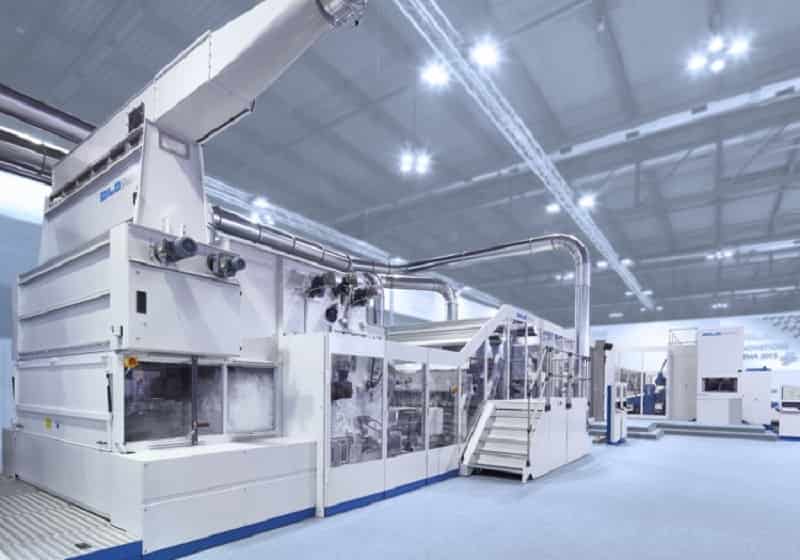
-Masterbatch: Ensuring Color Consistency in the PVC Industry’s Plastic Parts Manufacturing
Delta Tecnic, a leading provider of Masterbatch solutions, explores the application and maintenance of color in PVC products.
In the manufacturing of PVC plastic parts, achieving color uniformity poses a significant challenge. Maintaining consistent color throughout the useful life of the parts and from one production batch to another requires specialized formulations, machinery, and processes. Attaining this zero defects target demands precise color adjustment and repeatability between production batches. Bottle washing – PLA technology Layered film recycling
For compounders, meeting customer requirements is essential, as many applications demand exact color matching. Color uniformity is not only crucial for branding purposes but also for safety, particularly in fields like electrical cables and circuits, where color coding plays a vital role. There are various scenarios where color uniformity proves to be decisive. Multilayer Film Recycling
To color plastic parts, pigments or masterbatch can be used. However, using pigments can result in color variations between production batches. On the other hand, masterbatch offers a stable solution for maintaining color uniformity. It provides a fast and highly efficient method for adjusting color to the original specification without the need for additional adjustments during the product manufacturing process.
Achieving Consistency in Masterbatch Mixtures
At Delta Tecnic, we employ a rigorous quality control process for each masterbatch mixture we produce to ensure consistent color that aligns with the defined standard set by our customers. If any color discrepancies are detected, we adjust the mix to ensure uniformity. Proper dispersion of pigments is also critical for achieving color consistency and minimizing variations between different batches.
By transitioning from pigments to masterbatch, compounders can reap several benefits. These include virtually eliminating defects related to color uniformity and adjustment at the beginning of production. This translates to notable improvements in production line efficiency, reduction in waste generation, and associated cost savings. These advantages enable compounders to enhance their competitiveness in the market and increase their production capacity. In many cases, it allows them to enter new markets where the color requirements were previously beyond their capabilities, as pigments fail to provide the required color uniformity for these customers. Bottle washing – PLA technology Layered film recycling
In summary, color uniformity is a significant concern in plastic parts manufacturing. Working with masterbatch ensures color stability from one production batch to another and reduces the number of non-compliant products. Additionally, proper pigment dispersion is crucial for achieving color consistency. Compounders utilizing masterbatch can significantly improve their efficiency and competitiveness in the market.
Contributing to Waste Reduction and Sustainability
The importance of color consistency in plastic parts manufacturing extends beyond safety and branding—it also has a substantial impact on product durability. Inconsistent color can result in an uneven appearance and loss of aesthetic value, leading to premature scrapping or replacement of products. Therefore, color uniformity and stability over time contribute to sustainability and waste reduction.
Consequently, the use of masterbatch in plastic parts manufacturing offers environmental benefits. By reducing the production of non-compliant products, compounders simultaneously minimize waste generation and enhance energy efficiency. This is achieved by reducing preparation time and eliminating non-compliant internal products due to color deviations.
Masterbatch also plays a role in the recycling industry by improving the final appearance of recycled materials in terms of color, thanks to custom-designed masterbatches.
Ultimately, color consistency is just one aspect among many that plastic parts manufacturers must consider to produce high-quality, sustainable products. The utilization of masterbatch is a valuable tool for achieving greater production efficiency, waste reduction, and improved final product quality. By maintaining a focus on quality and sustainability, the plastic parts manufacturing industry can continue to innovate and progress toward a more sustainable future. Bottle washing – PLA technology Layered film recycling
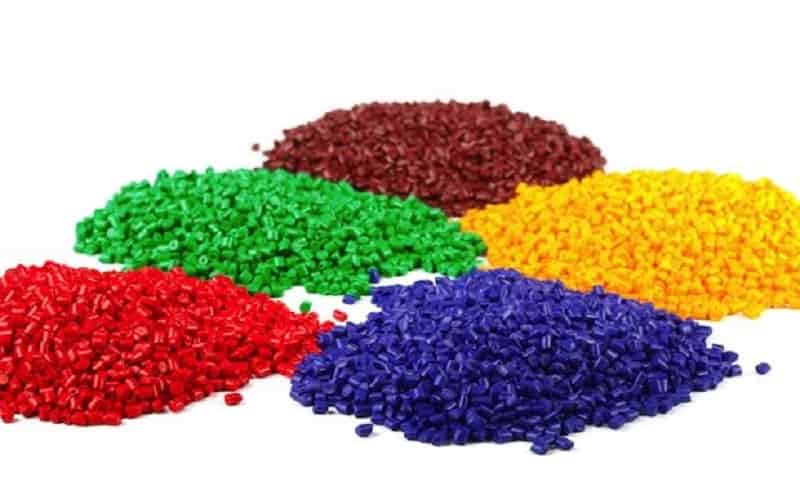
-Turning Trash into Treasure: Plastic Recycling Technologies
Over the long Memorial Day weekend, many attended parties and parades honoring those who served while celebrating being with loved ones. As you picture the day, images of those ubiquitous red solo cups come to mind, or perhaps patriotic-themed plastic BBQ plates and coolers filled with bottled water or bottles of soda. Now think of the all cleanup and the mountains of plastic waste collectively generated by the country in just that one day.
Plastics are one of the most prevalent and problematic waste materials due to their slow degradation and detrimental effects on ecosystems. Depending on the source, somewhere around 5%, 9%, or 15% of plastics are recycled in the United States, and worldwide, that number is around 9% of all plastic ever made. According to the Environmental Protection Agency (EPA) in 2018, the latest date for which there is data, plastic products waste generation reached 35.7 million tons in the United States, or 12.2% of total Municipal Solid Waste (MSW), an increase of 4.3 million tons (54.4%) from 2010, primarily from the durable goods and the containers and packaging categories. In this article, we delve into three types of plastic recycling and discuss some companies developing technologies for a cleaner future. Bottle washing – PLA technology Layered film recycling
Chemical Recycling
Chemical recycling involves using chemical reactions to break down plastics into their molecular components to produce high-quality raw materials, such as converting polymers into their constituent monomers or other useful products.
Norway-based Agilyx ASA (AGYX) is a technology licensor and a recycler. Historically, plastic recycling has been challenging because collecting, sorting, and recycling has often been more expensive than producing virgin plastic. One of the most significant barriers to recycling plastics is the challenge and cost of getting the right types of plastic waste to the right recyclers. To address this, Agilyx launched Cyclyx, a consortium-based supply chain company that works with municipalities, retailers, corporations, and universities to increase the amount of plastic waste sent to the appropriate recyclers.
Along with AmSty, Agilyx has a 50/50 joint venture facility in Tigard, Oregon, called Regenyx, that converts post-use polystyrene into its original components under the PolyRenew label. The facility showcases Agilyx technology at a commercial scale which supports its technology licensing business. In 2020, Agilyx and ExxonMobil created a joint venture to recover and sort plastic waste. Bottle washing – PLA technology Layered film recycling
Loop Industries (LOOP) depolymerization technology breaks down previously unrecyclable PET (polyethylene terephthalate) plastic and polyester fiber waste into their base building blocks, dimethyl terephthalate (DMT) and mono ethylene glycol (MEG). These monomers are then purified and re-combined (polymerized) into Loop-branded PET plastic and polyester fiber that can be used in food-grade packaging, such as water bottles, or for footwear and clothing.
